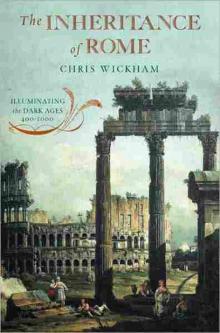The Inheritance of Rome: Illuminating the Dark Ages, 400-1000 

Genre: Other8
Published: 2009
View: 4940
Read OnlineRead The Inheritance of Rome: Illuminating the Dark Ages, 400-1000 Storyline:
An ambitious and enlightening look at why the so-called Dark Ages were anything but thatPrizewinning historian Chris Wickham defies the conventional view of the Dark Ages in European history with a work of remarkable scope and rigorous yet accessible scholarship. Drawing on a wealth of new material and featuring a thoughtful synthesis of historical and archaeological approaches, Wickham argues that these centuries were critical in the formulation of European identity. Far from being a middle period between more significant epochs, this age has much to tell us in its own right about the progress of culture and the development of political thought.Sweeping in its breadth, Wickham's incisive history focuses on a world still profoundly shaped by Rome, which encompassed the remarkable Byzantine, Carolingian, and Ottonian empires, and peoples ranging from Goths, Franks, and Vandals to Arabs, Anglo- Saxons, and Vikings. Digging deep into each culture, Wickham constructs a vivid portrait of a vast and varied world stretching from Ireland to Constantinople, the Baltic to the Mediterranean. The Inheritance of Rome brilliantly presents a fresh understanding of the crucible in which Europe would ultimately be created.From Publishers WeeklyStarred Review. Building on the foundation he laid in Framing the Early Middle Ages, award-winning Oxford historian Wickham constructs a magisterial narrative of the political, economic, cultural and religious fabrics that constituted the crazy quilt of Europe's Dark Ages. Negating what he calls a common teleological view of this period as the source of European nations and a modern sense of European identity, he draws on archeological evidence and rich historiographical methods Wickham challenges standard views of the early Middle Ages as barbarous and bereft of political and cultural structure, and recreates a stunning portrait of the breakup of the Roman Empire and its consequences for Europe. Wickham looks at the immediate post-Roman polities in Gaul, Spain and Italy; the history of Byzantium, the Arab caliphate and its 10th-century successor states, including Muslim Spain; the Carolingian Empire and its successors and imitators, notably Russia and Scotland. Under this narrative layer lies a focus on the accumulation of wealth, the institutionalization of politics and the culture of the public. Wickham's achievement contributes richly to our picture of this often narrowly understood period. Maps, illus. (Aug. 3) Copyright © Reed Business Information, a division of Reed Elsevier Inc. All rights reserved. From The New YorkerJust as astronomers no longer call Pluto a planet and paleontologists no longer recognize the Brontosaurus, historians have stopped referring to the European era from A.D. 400 to 1000 as the Dark Ages. The latest scholarship, Wickham explains, has made it possible to look at the period “without hindsight,” without moral judgments, grand theories, or modern nationalist myths. The result sounds like a historiographical stunt: a single volume that, using only a slender and unreliable documentary record and no narrative crutches, covers six centuries and at least seven major rival powers. Wickham largely pulls it off. His wide net catches some striking comparisons: apparently, all early medieval societies used coins except Ireland, “where valuations were in slave women and cows.” If anything, Wickham is too careful, reluctant to draw conclusions about an epoch that, no matter what new discoveries are made, will likely remain in partial eclipse.Pages of The Inheritance of Rome: Illuminating the Dark Ages, 400-1000 :